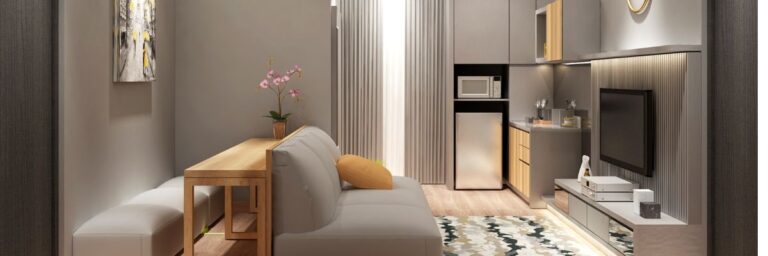Real estate has always been closely linked to architectural innovation. Whether designing residential homes, commercial buildings, or public spaces, the role of architecture in shaping the future of real estate is undeniable. The evolving needs of modern living, combined with technological advancements, demand that architects continue to push boundaries and rethink traditional design approaches. To stay competitive in today’s market, real estate developers must embrace these innovations and collaborate with forward-thinking architects. A shining example of such collaboration can be found at https://sjlarchitect.com, where architectural expertise meets real estate success.
Architectural Technology: The Game-Changer in Real Estate
Technological integration in architecture is revolutionizing how real estate projects are conceptualized, developed, and executed. Advanced 3D modeling tools, such as Building Information Modeling (BIM), allow architects to create precise, detailed blueprints. BIM enables architects and developers to collaborate seamlessly, reducing errors and improving project efficiency.
Augmented reality (AR) and virtual reality (VR) are also transforming real estate sales and design. Potential buyers can now explore properties virtually, experiencing architectural designs long before construction begins. This innovation reduces risk, allowing clients to visualize and customize their spaces based on accurate architectural renderings.
Sustainability: Leading the Way in Future Architectural Design
Environmental concerns are shaping architectural innovations globally. Architects are increasingly focusing on sustainability, designing homes and buildings that are energy-efficient and eco-friendly. Green architecture has become a necessity, especially as governments enforce stricter building codes related to energy consumption and environmental impact.
Modern architectural designs now incorporate renewable energy sources, such as solar panels and geothermal systems, to minimize the carbon footprint of real estate projects. Additionally, sustainable building materials, like recycled steel and bamboo, are being widely used to construct more eco-conscious buildings. These practices not only improve energy efficiency but also enhance property value, making sustainable architecture a key element for real estate success.
Smart Home Integration: Bridging Architecture and Technology
The rise of smart home technology is influencing architectural design in real estate. Modern homeowners expect more than just aesthetically pleasing spaces—they seek homes that offer convenience, security, and energy efficiency through smart systems.
Architects are now integrating smart home technology into the fabric of their designs. Features like automated lighting, heating, and security systems are becoming standard in new real estate developments. These innovations increase the appeal of properties, offering residents a seamless blend of design and functionality. For real estate developers, investing in smart architecture is a surefire way to attract tech-savvy buyers.
Flexible and Modular Designs: Meeting the Demands of Modern Living
One significant trend in architectural innovation is the shift toward flexible and modular designs. Modern homeowners and businesses require spaces that can adapt to changing needs. For instance, many residential buyers now prefer homes with open floor plans that offer the flexibility to create multi-functional spaces.
Architects are addressing these needs through modular designs, which allow for quick and cost-effective construction. These structures are built off-site and assembled on-site, reducing both time and labor costs. Modular architecture also offers greater customization, allowing developers to create diverse property types tailored to specific market demands.
Urbanization and Vertical Building: The Future of City Living
As urban areas become more densely populated, architects are responding with innovative vertical designs. Skyscrapers and high-rise buildings are no longer limited to commercial use—they are increasingly designed for residential living.
Vertical architecture is a solution to the challenge of limited urban space. By building upward instead of outward, architects can create more housing and commercial space in growing cities. These designs are also incorporating green spaces and communal areas to enhance urban living experiences, blending functionality with aesthetics.
Architectural Trends Shaping Real Estate Success
Architectural innovations are playing a critical role in the success of real estate developments. By embracing technological advancements, focusing on sustainability, and designing flexible spaces, architects are creating environments that meet modern demands.
For real estate developers, staying ahead of these trends is essential. Working with architects who understand the latest design innovations will ensure that their projects not only meet but exceed market expectations.




